What Are The Different Types Of Tigers Living Today?

- Also called the Indian tiger or the Royal Bengal tiger (P. t. tigris), this subspecies of tiger lives in the Indian sub-continent.
- The Xiamen tiger (P. t. amoyensis), it is the most threatened among all the subspecies or types of tigers.
- The Amur tiger (P. t. altaica), this tiger subspecies lives in far eastern Siberia
The tiger (Panthera tigris) is one of the most magnificent and awe-inspiring wild animals living today. A tiger is regarded as a charismatic megafauna as an apex predator and is classified in the genus Panthera. Tigers are territorial and generally solitary in nature. Tigers once roamed across Asia from Turkey to Eastern Siberia as well as across large parts of South and Southeast Asia.
The global tiger population has plummeted drastically to between 3,062 and 3,948 individuals from a possible 100,000 at the beginning of the 20th century. Habitat destruction, habitat fragmentation, reduced food sources, poaching for skin, bones, and other body parts are some of the factors that are responsible for such a decline in tiger numbers. There are ten recognized subspecies of tigers. One among these ten subspecies, the Trinil became extinct in prehistoric times. Three subspecies of tiger, the Bali tiger, the Caspian tiger, and the Javan tiger, which survived to the mid-20th century, are considered to be extinct now. The other six tiger subspecies struggling to survive in the wild today include the Bengal tiger, the Indochinese tiger, the Siberian tiger, the South China tiger, the Malayan tiger, and the Sumatran tiger.
7. Extinct Subpecies Of Tigers

The Bali tiger (P. t. balica), the Caspian tiger (P. t. virgata), and the Javan tiger (P. t. sondaica) are the three subspecies of tigers that are now extinct. The Bali tiger was found on the island of Bali and the last tiger of this subspecies is believed to have been killed on September 27, 1937. The Caspian tiger was found through Central Asia into Xinjiang’s Takla-Makan desert. It has been recorded to exist in the wild till the early 1970s. The Javan tiger was found on the island of Java till the mid-1970s and was larger than the Bali tigers. Since the 1990s, no wild sightings of this tiger has been recorded.
6. Sumatran Tiger
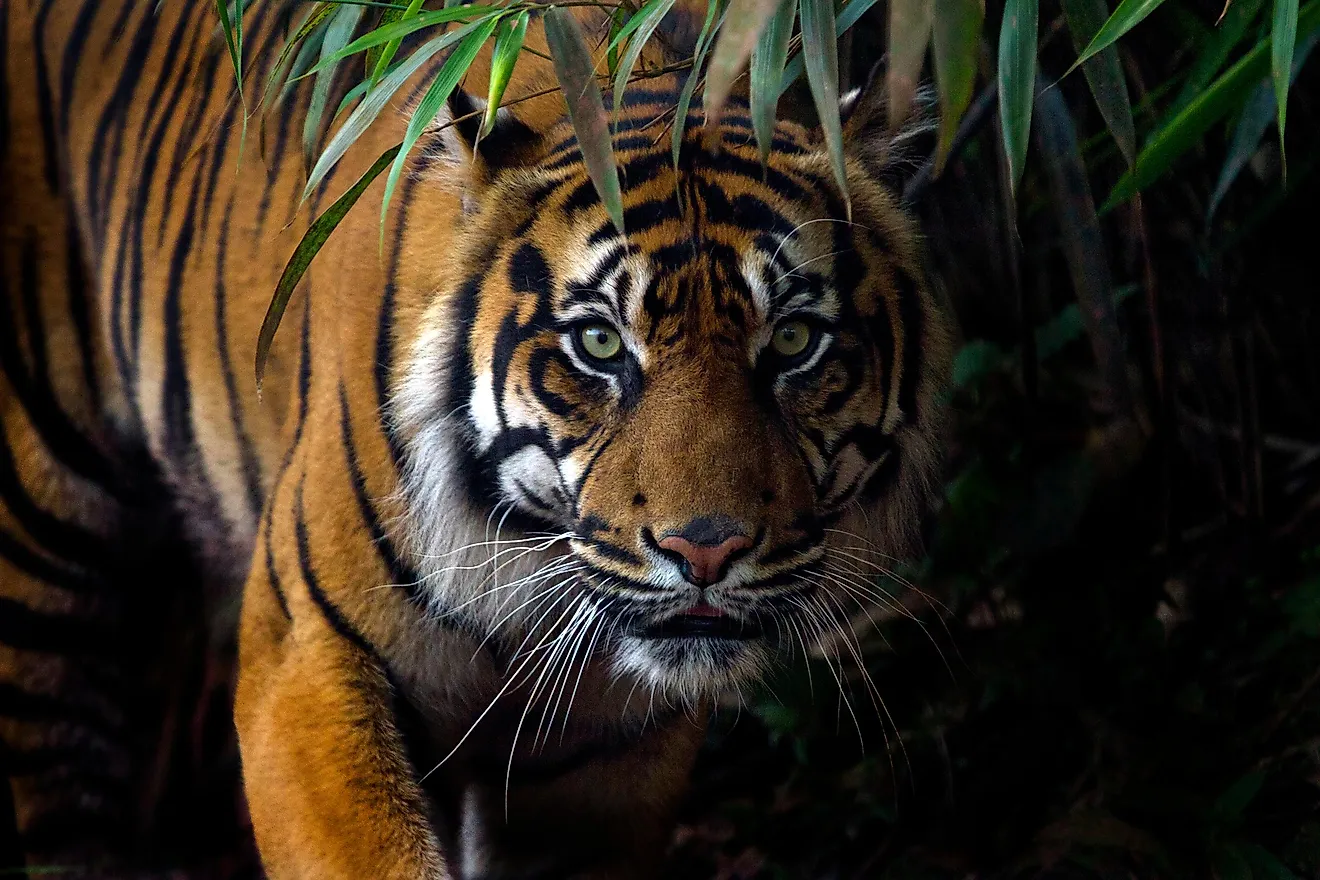
The Sumatran tiger (P. t. sumatrae) is a tiger subspecies that is endemic to the Sumatran island of Indonesia. The tiger is classified as critically endangered and as of 2014, only about 400 to 500 individuals of this subspecies exist in the wild.
The Sumatran tiger is the smallest one among all the types of tigers mentioned in the list. Their size is an adaptation to the dense forests inhabited by them as well as the small size of their prey. The Sumatran tigers also possess the darkest coats among all tigers, stripes are narrowly spaced, and they possess longer beards and manes.
5. South China Tiger
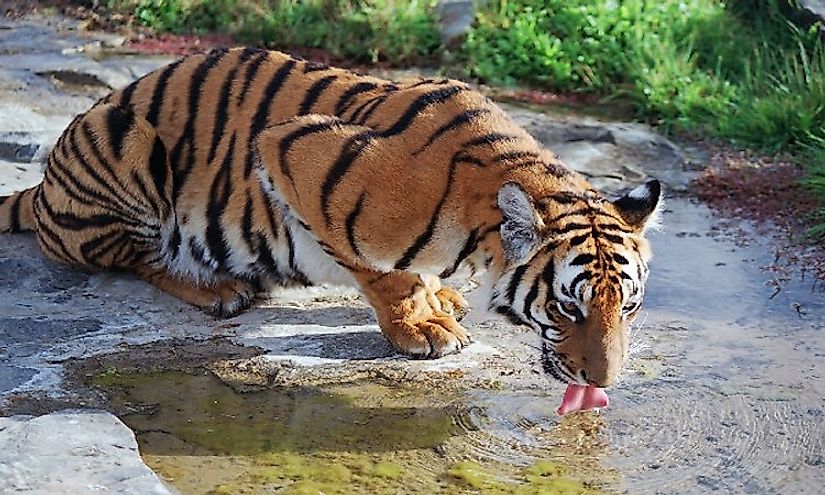
Also known as the Xiamen tiger (P. t. amoyensis), it is the most threatened among all the subspecies or types of tigers. For over 25 years, there has been no confirmed wild sighting of these tigers. Some evidence of footprints and unconfirmed reports indicate that there is some chance that these tigers still exist in the wild. Hope is low, and most experts consider the South China tiger to be “functionally extinct.” About 65 individuals of this subspecies remain in captivity.
Male Xiamen tigers have a length ranging between 230 and 260 cm. Females attain a length of 220 to 240 cm. This subspecies of tiger is regarded as one of the earliest evolved tiger subspecies and the second smallest one among all the types of tigers. It has a vivid orange color, a long muzzle nose, narrow skull, and rhombus-like stripes.
4. Siberian Tiger

Also known as the Amur tiger (P. t. altaica), this tiger subspecies lives in far eastern Siberia in the Amur-Ussuri region of Khabarovsk Krai and Primorsky Krai. A small population also exists in northeastern China’s Hunchun National Siberian Tiger Nature Reserve. The population of these tigers has recovered slightly from 331 to 393 in 2005 to about 480 to 540 as of 2015.
The Amur tiger is the largest among all types of tigers. Males have a body length ranging between 190 and 230 cm. Females have an average length between 160 and 180 cm. These tigers possess thicker coats with paler hues. The coat also has fewer stripes which are dark brown in color. The Siberian tiger is classified as endangered and is extinct in North Korea, South Korea, and Mongolia where it once existed.
3. Malayan Tiger
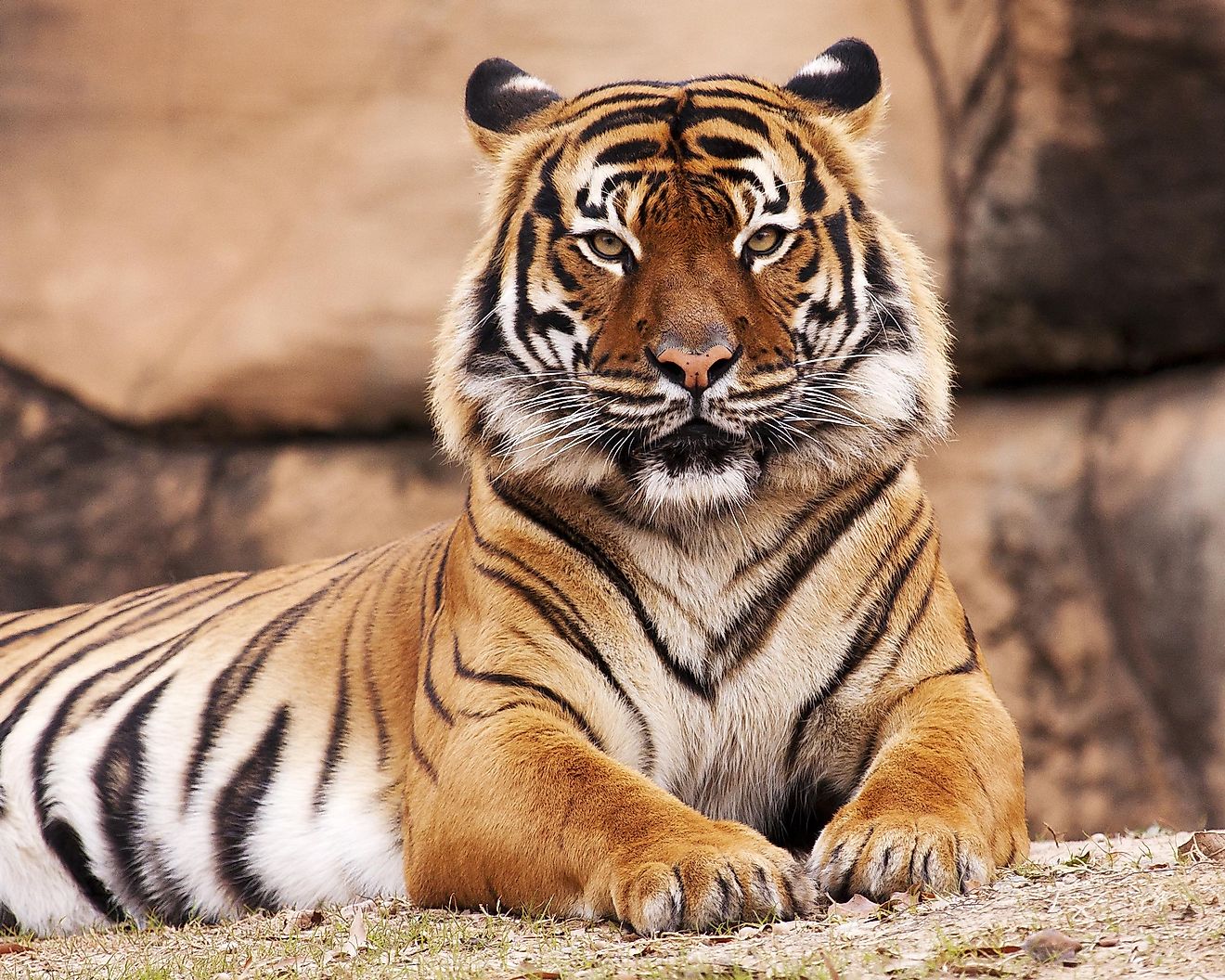
Though once thought to belong to the Indochinese tiger subspecies, the Malayan tiger (P. t. jacksoni) was classified as such after a 2004 genetic analysis exhibited distinct differences between the two types of tigers. The Malayan tiger occurs exclusively in the Malay Peninsula’s southern part. Once found in Singapore, the last wild tiger there was shot dead in 1930. Today, only about 250 to 340 individuals of this subspecies remain.
Male Malayan tigers have a length ranging between 190 and 280 cm while females have a length from 180 to 260 cm. These tigers are classified as critically endangered and are now extinct in Singapore and Thailand where once these tigers were found in large numbers.
2. IndoChinese Tiger -
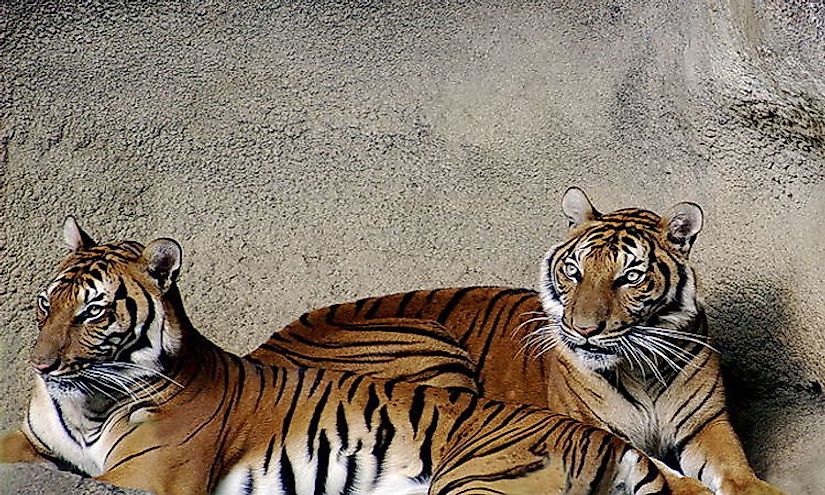
Also called the Corbett's tiger (P. t. corbetti), the tiger is found in the forests in hilly or mountainous regions of the Thailand, Cambodia, Vietnam, Laos, and Burma. Only 350 individuals of this subspecies of tiger existed in 2010, making it one of the rarest types of tigers in the world.
Male Indochinese tigers have an average length of about 270 cm and weigh between 150 and195 kg. Females have an average length of about 240 cm and weigh between 100 and 130 kg. The tiger was once found in China but is now extinct in the country.
1. Bengal Tiger
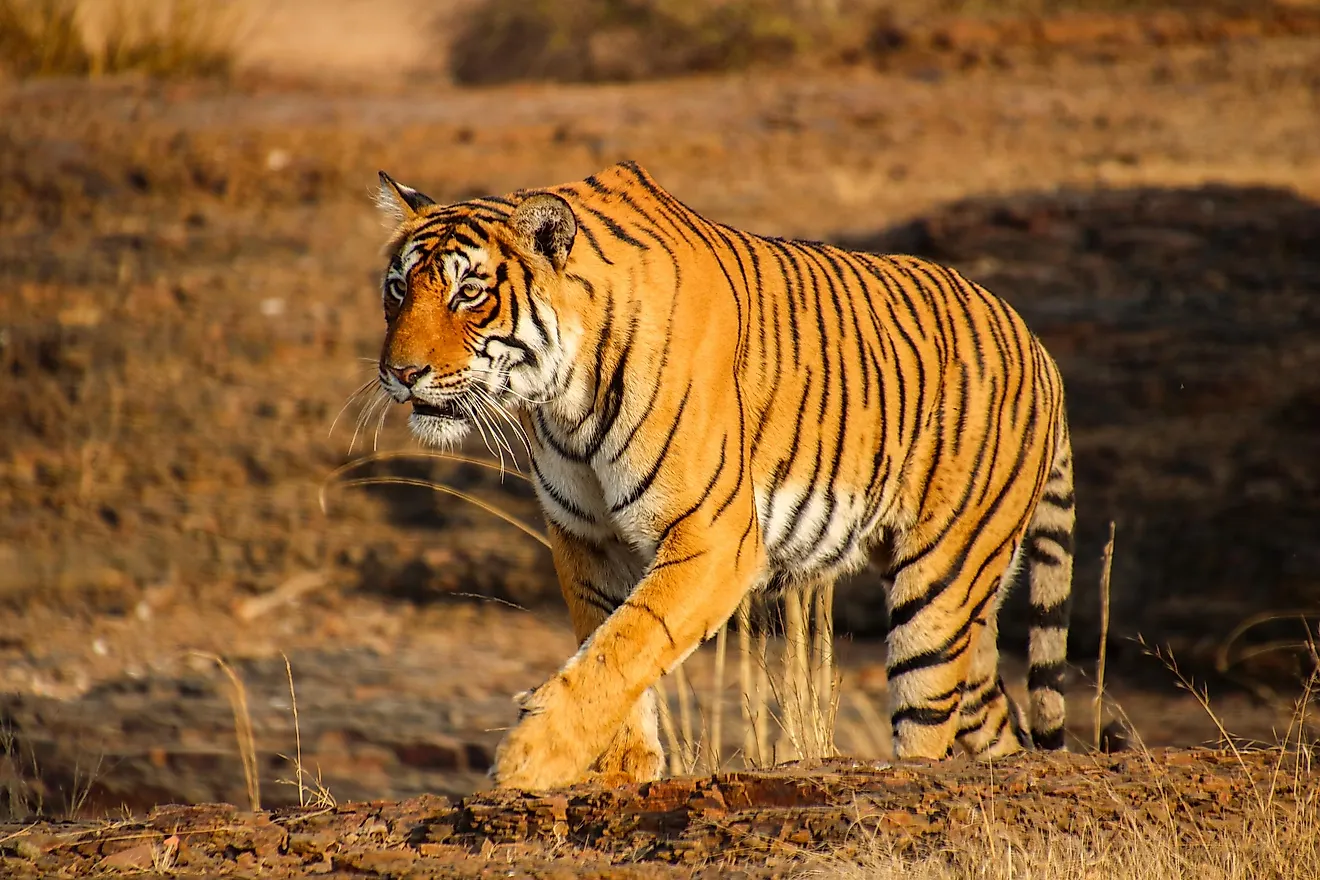
Also called the Indian tiger or the Royal Bengal tiger (P. t. tigris), this subspecies of tiger lives in the Indian sub-continent where it is found in India, Bangladesh, Nepal, and Bhutan. Here, it inhabits the subtropical and tropical rainforests, wet and dry deciduous forests, alluvial grasslands, scrub forests, and mangrove habitats. The tiger subspecies is the most abundant one in the world even though its numbers are still low enough for the subspecies to be classified as endangered. In 2014, the population of the Indian tiger in India was about 2,226. In 2015, the population of this tiger in Nepal was estimated to be about 163–253, and in Bhutan, it was about 103.
Male Bengal tigers attain a length of 270 to 310 cm from nose to tail while females are smaller with length ranging between 240 and 265 cm. The color of the coat of these tigers vary from light yellow to reddish yellow and is accompanied with black stripes. The tiger, though once found in China and Pakistan, is currently extinct in both these countries.











